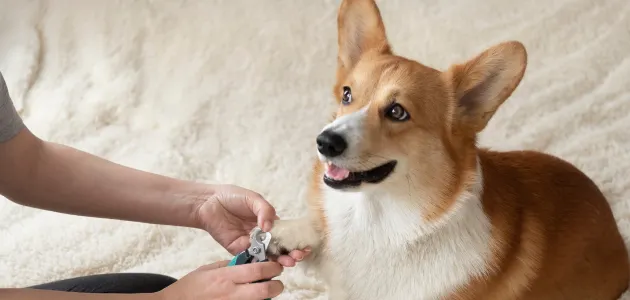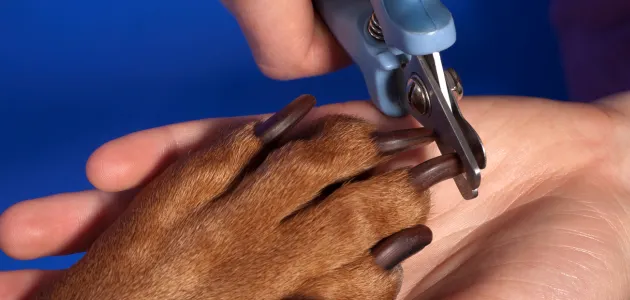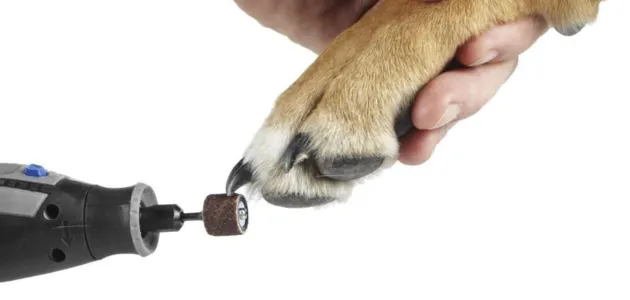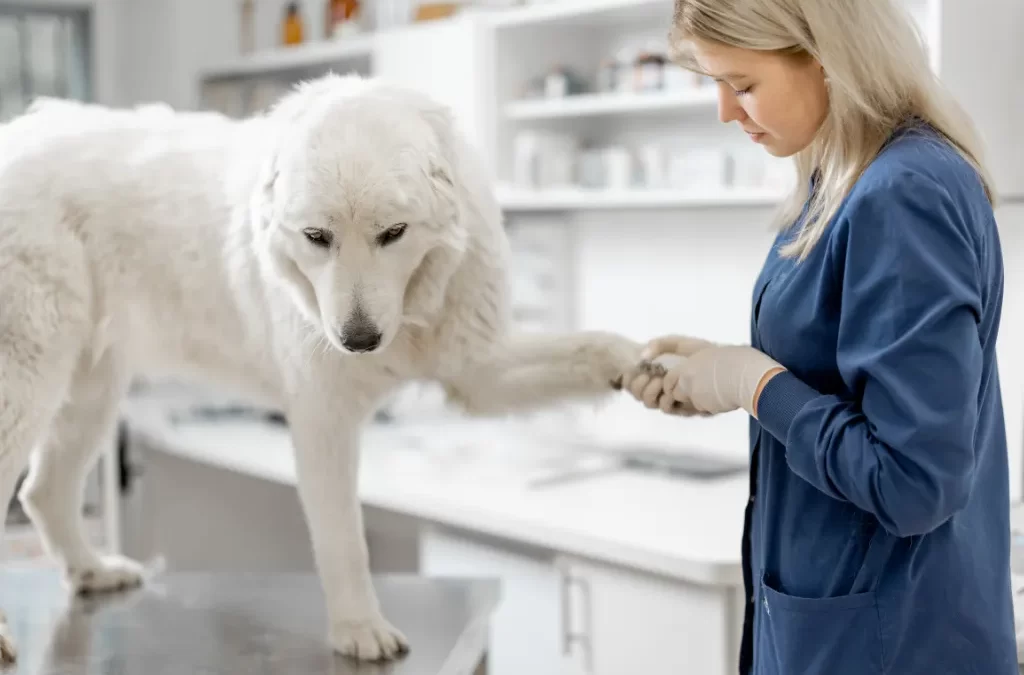Taking care of your dog’s nails is an essential part of their grooming routine. Overgrown nails can lead to discomfort, pain, or even injury for your furry friend. That’s why choosing the right nail trimmer is vital.
In this article. we’ll take a look at how often you should trim your dog’s nail, tips for dog nail trimming, and the different types of dog nail trimmers.
How Often to Trim Dog Nails

The frequency with which you should trim your dog’s nails depends on various factors including their lifestyle, age, and the type of surfaces they regularly walk on. Here’s a general guideline to help you determine how often to trim your dog’s nails.
Active Dogs on Hard Surfaces: Dogs that frequently walk or run on hard surfaces like concrete sidewalks or asphalt roads might require less frequent nail trimmings. This is because the hard surfaces naturally wear down the nails.
Indoor or Sedentary Dogs: Dogs that spend most of their time indoors or are less active will likely need their nails trimmed more often, usually every 3-4 weeks.
Puppies: Puppy nails grow fast! You may need to trim your puppy’s nails as often as once a week.
Listen for the “Click”: A good sign that your dog’s nails are too long is if you can hear them clicking on the floor when they walk. If you hear this sound, it’s time for a trim.
Regularly Check the Dewclaw: The dewclaw is the nail located on the inner part of the paw, higher up than the rest. It doesn’t touch the ground, so it doesn’t wear down naturally. Check it regularly and trim as needed to prevent it from growing into the paw pad.
Factors Affecting Nail Growth: Just like human nails, some dogs might have nails that grow faster than others. Diet, genetics, activity level, and overall health can all influence how quickly a dog’s nails grow.
Tips for Trimming Dog Nails

Choose the Right Tools
Invest in a quality pair of dog nail trimmers or a grinder. There are several types available: guillotine style, scissor style, and grinder style.
Choose what you’re most comfortable with. Keep styptic powder or cornstarch on hand. This helps stop the bleeding if you accidentally cut the quick.
Start Young
If you have a puppy, start trimming their nails early so they get used to the process. Even just handling their paws regularly can make them more comfortable.
Choose a Calm Environment
Find a quiet place, free from distractions. This will help keep your dog calm and make the process smoother.
Comfort is Key
Make sure your dog is relaxed before starting. You can do this by petting them, giving them a gentle massage, or even taking them for a walk to expend some energy.
Use treats and praise to reward your dog after trimming each nail, making the experience positive.
Check the Quick
The quick is the blood vessel inside the nail. In dogs with light nails, it’s the pinkish part. Avoid cutting this, as it’s painful and will bleed.
If your dog has dark nails, trim a little bit at a time to avoid cutting the quick. You can look for a chalky white ring with a black center when you’re getting close to the quick.
Hold Firmly but Gently
Secure your dog’s paw but don’t squeeze too hard. Hold the toe steady while trimming.
Trim Regularly
Regular trims make the quick recede over time, so you can cut shorter without causing discomfort or bleeding.
Consider a Grinder
If you’re nervous about cutting the quick, a grinder might be a good choice. It grinds the nail down slowly, so there’s less risk of cutting too much off at once.
Stay Calm
Dogs pick up on our emotions. If you’re nervous, your dog will be too. Take deep breaths, stay calm, and if you feel uneasy, take a break and come back to it later.
Ask for Help
If you’re unsure about trimming your dog’s nails yourself, ask a vet or professional groomer to show you how. You can also consider making it a two-person job—one person to hold the dog and another to trim.
Types of Dog Nail Trimmers

Guillotine Style
A guillotine-style nail trimmer has a hole where you insert the dog’s nail. As you squeeze the handle, a blade slides across to slice the end of the nail. It’s best suited for small to medium-sized dogs.
Scissor Style
These trimmers work exactly like scissors. They’re straightforward to use and are ideal for dogs with thicker nails. Both small and large dogs can benefit from this style.
Grinder Style
A more modern approach, the grinder style, uses a rotating component to grind down the dog’s nail gradually. This is a great option for dogs who are scared of traditional clippers and for owners who fear overcutting.
Factors to Consider When Choosing a Dog Nail Trimmer
Blade Sharpness
A sharp blade ensures a clean cut without splitting the nail. It also reduces the force required to trim, making the experience less stressful for both you and your dog.
Comfort Grip
Choose trimmers with ergonomic designs or soft-grip handles. This ensures ease of use and reduces the risk of accidental nicks.
Size of the Trimmer
Just like shoes, there’s no one-size-fits-all. Select a trimmer size that matches your dog’s size for efficient trimming.
Safety Features
Some trimmers come with safety guards to prevent overcutting. It’s especially useful for those new to nail trimming.

